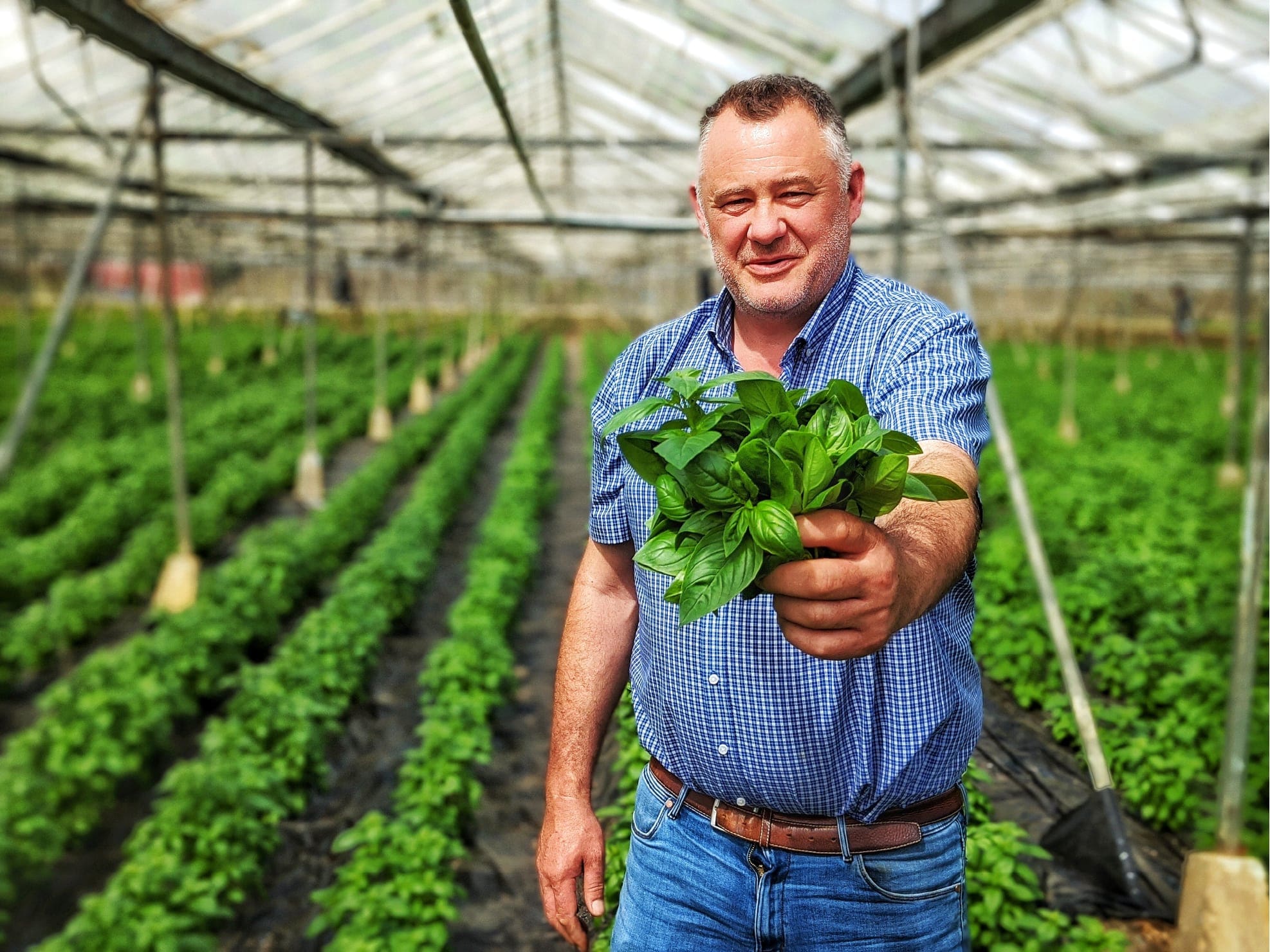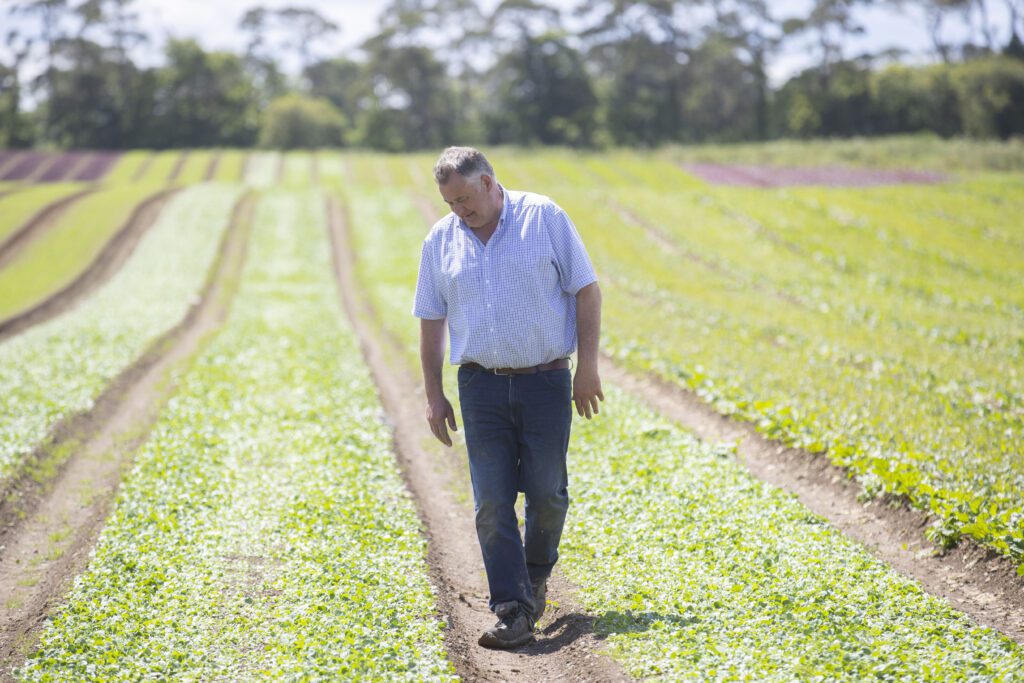
Turning over a new leaf – our journey to growing organic spinach
Published on July 27, 2022

Turning over a new leaf – our journey to growing organic spinach
We’ve been farming as sustainably as we can for nearly four decades in an area of Meath known as Kiltale, Boycetown. From my father’s days growing fresh produce, to our move into baby salad leaves and herbs, we are always looking for the next opportunity and challenge!
The decision to try organic farming was not made overnight, but we were really keen to provide our customers with a consistent supply of quality, organic produce and we thought that this, coupled with our ongoing sustainability commitments as part of Bord Bia’s Origin Green initiative that there could be something worth exploring here.
The starting point was the land itself. It takes seven years to get soil in the correct condition for organic farming, so once we located suitable land, we set about getting it certified as organic.
Step 1. Firstly we go out with Rotary machines to chop up the layland, the grass that has been in the ground all of its life. Over a 2-month period, we will chop the grass up numerous times to break it up, remove the roots from the soil and allow any vegetation to die off under the sun. If any vegetation stays in the soil the process has to be restarted so it is worth taking the time to do this stage properly. We started this in January of this year.
Step 2. Next, it’s time to do a soil analysis and look at what is in the soil. We apply an organic fertiliser to add back in any necessary nutrients to get the soil in optimum condition for growing. Compared to conventional growing methods, organic fertilisers take much longer to work – around about 8 weeks!
Step 3. To prevent any weeds from forming at this early stage we run a gas burner across the edges and any fallow soil to make sure nothing is in the soil before we add the spinach. This is happening before sowing. Once beds are formed and just before sowing, if we see that there is any germination, the burners are used over the beds. This kills the weeds and we can sow.
Step 4: Time to sow our seeds. We started small to trial the process and we now have 10 hectares of organic spinach planted. The crop receives 2 lots of organic folio feed until ready to harvest. We will sow seeds every week for a consistent supply of the crop.
Step 5: Harvest time is here! Once we have picked all of the leaves, we will again run the gas burner across the beds to prevent any growth of vegetation. If we don’t do this, any weeds that are present could go to ‘seed’ and spread across the land if there is any wind.
Step 6: To protect soil health, we will then plant a cover crop in the beds. This is an easy-growing crop that will cover the land and prevent any weeds from forming. We will not sow the same ground for harvesting twice in one year. Come January or February of next year, we will chop the cover crop and rotate it back into the soil to act as part of an organic fertiliser and we start the process from scratch again!
Now that we are harvesting the first of our organic spinach, we can confidently say that the move to grow our own crop during the Irish season will save 132 tonnes of CO2 emissions compared with importing from further afield.
We’d love for you to try our new product and let us know what you think!





